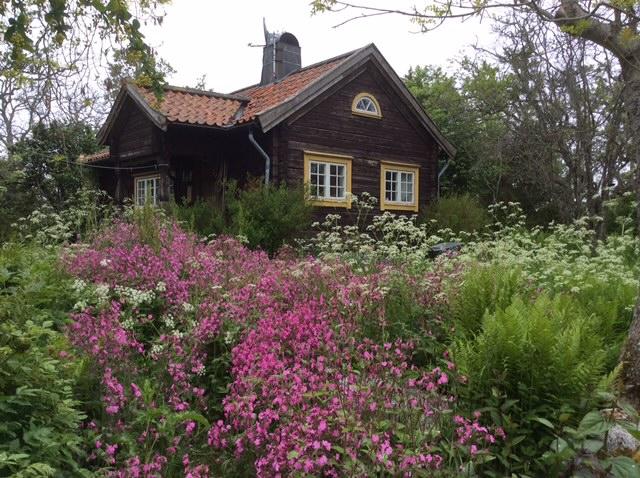Axel Einar Hjorth
a stained pine 'Utö' table, Nordiska Kompaniet, Sweden 1930s.
Marked undernetah with pencil: "13/6 1939", measurements 69 x 54.5 cm, height 48 cm.
Minor wear and marks.
Provenance
The underside of the table marked with pencil: "13/6 1939". Dr. Englund bought the small table at Nordiska Kompaniet in Stockholm for his summer residence, a small island in Stockholm's outer archipelago. On the island, which was purchased a couple of years earlier, Dr. Englund had a small log cottage built from old logs from the demolished mission house in Spillersboda. The seller tells: "My father bought the table at NK when he wanted to decorate the cottage he built on Tättgrundet, which is next to Norröra, where the films "Saltkråkan" were filmed. He was interested in antiques and beautiful objects and decorated the cottage in a style inspired by Zorn and Dala cottages".
There in the old cabin on the "Doctor's Isle" as the island was sometimes called, the table has stood in the same place for over eighty years. The cottage eventually came to house a large family with four children. One of the daughters was the glass artist Eva Englund.
Designer
Axel Einar Hjorth is considered one of Sweden's most significant furniture designers during the 1920s and 30s. Hjorth's early employers included Svenska Möbelfabrikerna in Bodafors and the Stockholm Crafts Association. The big breakthrough came as chief architect for Nordiska Kompaniet, a position he took up in 1927 and held until 1938. Hjorth's first major assignment was the Nordiska Kompaniet's lavish stand at the World Exhibition in Barcelona in 1929, to then participate in several major international exhibitions during the following decade. In 1929, Hjorth also breaks new ground and designs the first series of rustic furniture in stained pine, the so-called sports cabin furniture that was named "Lovö", "Utö" and "Sandhamn" after the islands in the Stockholm archipelago.
Read more










































































































